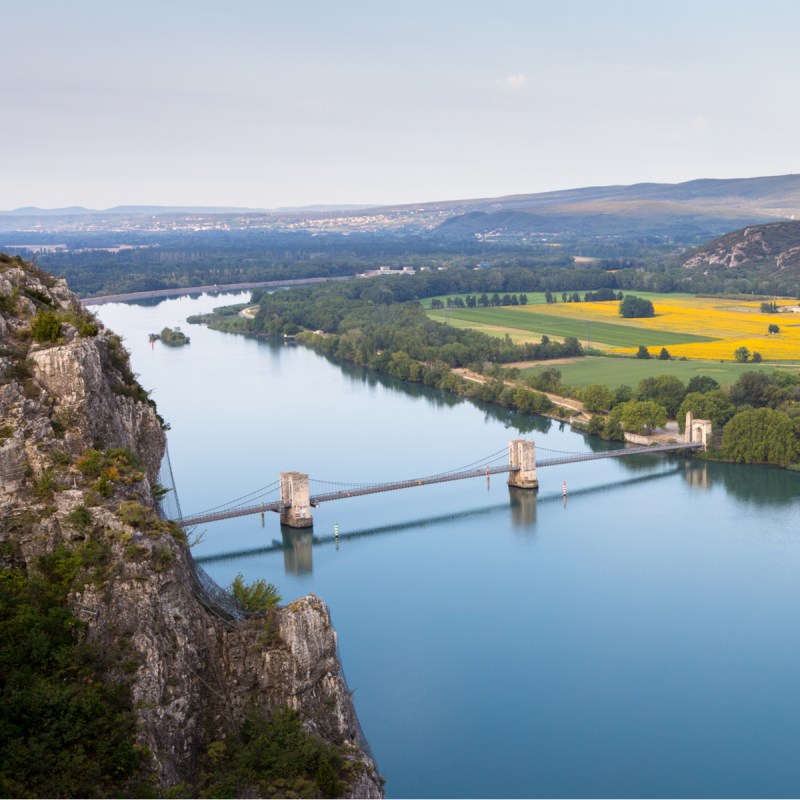
The London Underground subway system — lovingly known as “the Tube” to those who ride it daily — is an indispensable mode of travel for visitors to the UK capital. Tourists have climbed the steps from deep underground up to Covent Garden, Piccadilly Circus, and Westminster for decades to see the city’s most famous sights. But some out-of-the-way stops on London’s Underground and connected lines offer some attractions most tourists never get a chance to see.

1. Linger In Little Venice
England’s key role in the Industrial Revolution relied on a complex system of canals crisscrossing the country and allowing materials and goods to flow in and out of London’s busy ports. Much of that canal network still carries commercial and leisure traffic today. One of the best places to visit a beautiful stretch of working canal is in the neighborhood known as Little Venice on London’s near northwest side.
Take the Bakerloo Line north from central London and just six stops from Piccadilly Circus, you’ll find the Warwick Avenue station. Exit the station and head south for two blocks to find Regent’s Canal. Venture down the stairs and you’ll be able to walk along the canal, finding parked narrowboats that serve as houseboats for people who travel up and down the country by water. Some of these boats now serve as cafes, great for a relaxing cup of tea canal-side. The quaint Waterside Café is a favorite for locals and tourists alike, situated on a turning basin in the canal called Browning’s Pool (named for English poet Robert Browning who lived overlooking the basin). For a higher vantage point, head east along the water and try Café Laville, built into the Edgware Road bridge over the canal’s entrance to the historic Maida Hill Tunnel.
Sightseeing along the canals is free, but if you’d like a guided tour on the history and modern use of the canals, one of the best bets is Jason’s Trip, an antique canal boat now fitted to carry passengers. Trips are available spring through fall one way from Little Venice to bustling Camden Locks, with a live guide giving a history of the boat, the canal, and everything you’ll see alongside. Make it a round trip or take the hour-long walk back if you want to see the canal again.

2. Ride Down To Electric Avenue
London isn’t all tea and Tennyson poems. It’s also a center of world culture that can easily be found around its Underground stations. Lying at the south end of the Victoria Line, just four stops past bustling Victoria Station, Brixton Station offers visitors a chance to step into an Afro-Caribbean world. Jamaican culture rules the streets, with food vendors and shops serving up the best of everything from jerk chicken to reggae music.
Speaking of music, fans of the 1983 Eddy Grant classic will find themselves able to walk down to Electric Avenue and take it higher. The street was so named because it was London’s first market street lit by electricity. With electricity no longer an oddity, Electric Avenue is now the place to find island-style shopping in Brixton Market, or turn right off the avenue and head three minutes down Atlantic Road to Fish, Wings & Tings for locally-sourced food served with true Caribbean flavor.

3. Tennis, Anyone?
The famed Wimbledon tennis tournament takes its name from the suburb on the near southwest side of London that is home to the All England Lawn Tennis & Croquet Club. Wimbledon is the oldest and perhaps most prestigious tournament in professional tennis. The club lies a 15-minute walk from Southfields Station on the busy District Line, just six stations past the hub at Earl’s Court Station. As you leave the station, turn right and walk down Wimbledon Park Road and Church Road, alongside lush Wimbledon Park.
Once at the club, visitors can tour a museum that showcases the history of the tournament, including a chance to feel the actual fabric of tennis garb of old and to see Court No. 1. The museum tours are offered Thursday through Sunday and need to be booked in advance. The club’s famed Centre Court is undergoing renovations for its centennial in 2022, so tours of it and the surrounding grounds of the club are suspended for the time being.

4. Football, Anyone?
Sports fans will also want to visit the only Tube stop named for a football team. And when we’re talking football in London, we mean what Americans call soccer. It’s hard to find more rabid football fans than those who follow Arsenal F.C., a Premiere League team playing in the London suburb of Islington on the city’s north side. The team plays at Emirates Stadium near Arsenal Station. To reach Arsenal Station, riders on the Piccadilly Line can take the Tube north from central London, five stops past Covent Garden.
Even before you leave the station to see the stadium, you’ll notice two strange features. First, it doesn’t have lifts (elevators) or stairs to get you up to street level. Instead, it uses a system of ramps. You’ll also see bars separating different sections of the ramps — there to control crowds on match days. Leave the station and turn right on Gillespie Road and follow the curve onto Drayton Park. There, you’ll be confronted with the sight of this stadium rising out of a working-class neighborhood. The stadium entrance is just a short 500-foot walk from the station. There, you can take a tour of the 60,000-seat facility, pick up some red Arsenal “kit” (British for jerseys and such) and meet some of the local fans. It’s best to book tours in advance.

5. See Another Side Of The Thames
A walk along the Thames or across its bridges is a London must. But most visitors don’t realize there’s a place to walk under the river. This involves two train stops not on the London Underground, but on the newer Docklands Light Railway (DLR). DLR trains join the London Underground at the Tower Gateway and Bank stations. From either, take the DLR east and south toward Lewisham Station — but be careful as the DLR has several lines to different destinations leaving from the same platforms. Get off at the Island Gardens Station, 10 stops from Tower Gateway or Bank. Be warned that at this point, the journey has quite a bit of walking and stairs. Exit the station and head south along Douglas Path until you encounter a round building with a glass top. This is the north entrance to the Greenwich Foot Tunnel. Descend the spiral stairs and you’ll quickly find yourself walking 50 feet below the river.

This 120-year-old, cast-iron tunnel has more than a few leaks, so take care not to slip in the wet spots. The entire walk under the river is just less than a quarter mile and takes most people about 15 minutes. You’ll find steps at the other end leading up and out on the south bank of the river in the suburb of Greenwich. Just a five-minute walk away, you’ll find Cutty Sark Station. You can make your way back to central London from there. Before you do, take time to walk around the riverfront area to see the 150-year-old British clipper ship Cutty Sark and visit the shops along Greenwich’s narrow streets. If you’re still up for some walking, it’s just less than a mile — be warned, all uphill — to the Royal Observatory Greenwich, where you can cross the Prime Meridian and step between the Eastern and Western Hemispheres.
6. Take In The Tube’s Own Wartime Tragedy
A final stop of the London Underground’s oft-missed stations takes you to Bethnal Green Station (take care not to mistake this for a station of the same name on the London Overground train system) on the Central Line, just seven stops east of Oxford Circus. Exit the station and cross the street to Bethnal Green Gardens. At the entrance, you’ll find a striking and somber memorial to the March 3, 1943, Bethnal Green Tube Disaster. The Stairway to Heaven Memorial lists the names of the 111 adults and 62 children who died by trampling and suffocation as a crowd of people, under the mistaken belief that a German bombing raid had begun, rushed into the station seeking shelter. Take a moment to experience the quiet calm of the memorial before rejoining the hustle and bustle of London travel.
Those wondering just how expensive all these Tube rides can be will find comfort in the London Underground’s pricing methods. At the time of this writing, single rides in London’s central zones with card payment cost between £2.50 and £3.20. But no matter how many trips you make within central London, the maximum you’ll pay daily is £7.70 — around $10 USD. Weekly passes are slightly cheaper if you use them every day. Consider this pricing incentive to see even more of London’s lesser-known Tube stops knowing that, after two or three rides each day, all the extra rides are free!
